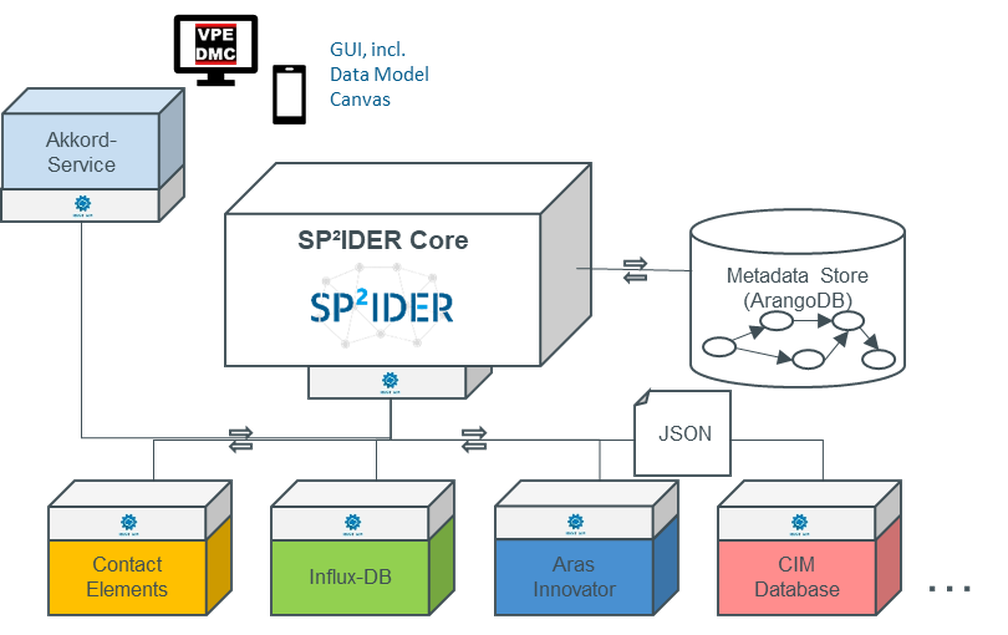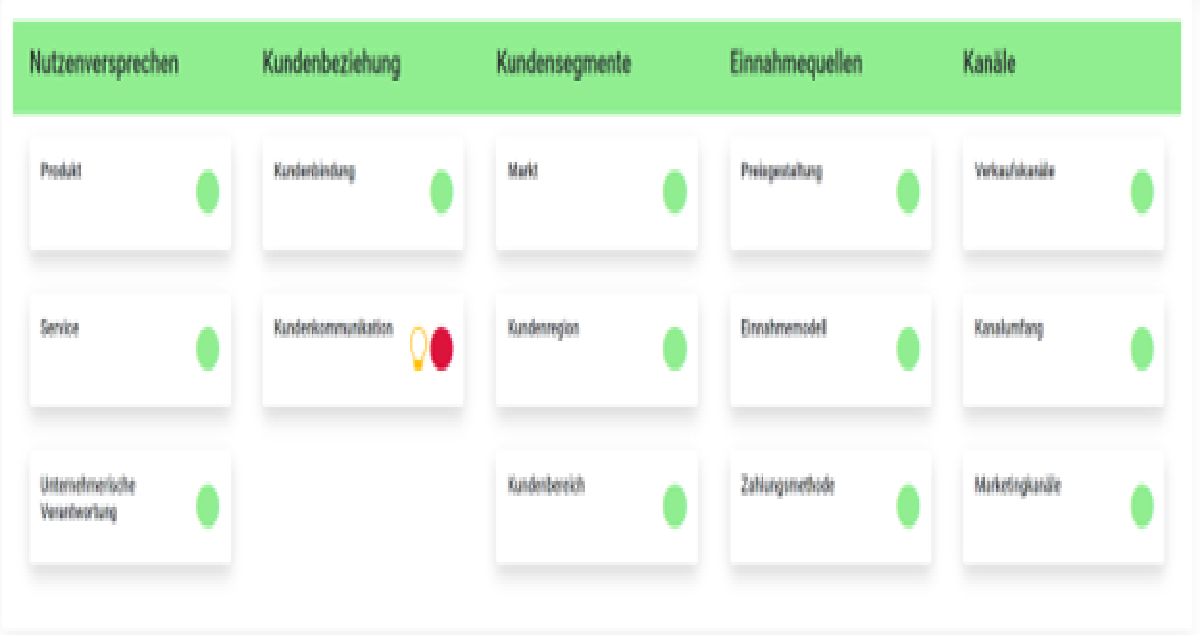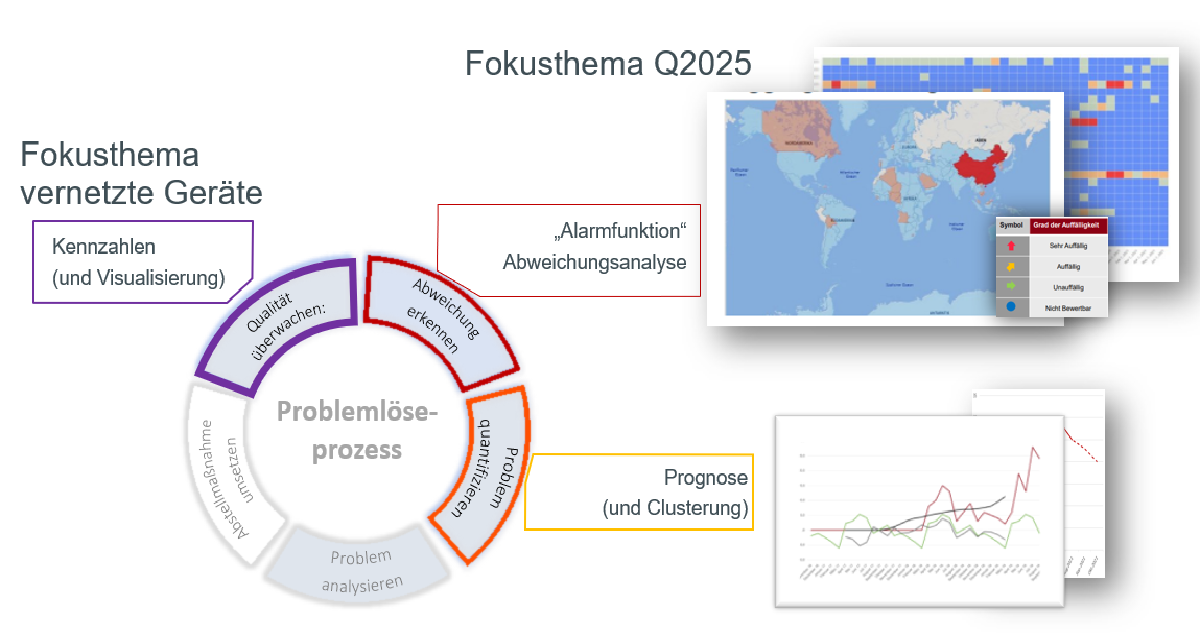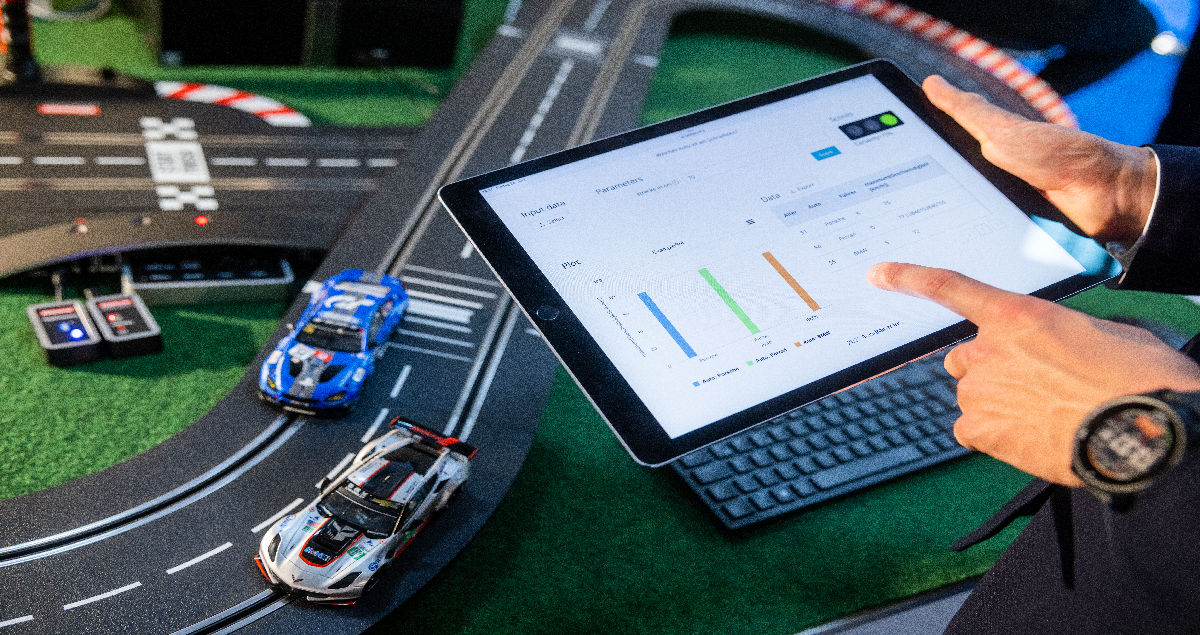Work report from the Use Case 8 „Roll-Out strategies for Data Analytics within the triangle of technology, organization, and human“
The aim of Use Case 8 is to define a modular process model to support the introduction (idea to productive use) of data analytics within the triangle of human, technology, and organisation. The process model provides concrete recommendations for the technical development and implementation of solutions, as well as the Change-Management on the base of a holistic interview-series “Human-Project-Organisation“.
Starting Point
The methodical handling of data science-related topics in a company, i.e., Industrial Data Science – IDS, is a diverse topic from a technical and functional point of view, as well as from an organisational and human perspective. The storage and processing of data, the discovery of useful patterns in data, the model development and the deployment of the solution is enabled by a series of iterative activities that are collectively referred to as the data science process model.
The last years different frameworks for this process have been proposed by academic and commercial institutions (such as CRISP-DM). If one takes a closer look, one will notice that all these frameworks share common features. Therefore, a more general framework can be extracted. This framework shares (inevitably) commonalities with the CRISP-DM process in that it captures the essence of IDS projects and can be applied to a variety of IDS problems. Such a model must also be in line with the general IT development process, starting from problem analysis and requirements engineering to planning, development, testing, deployment, and operationalisation. In addition, the implementation of data analytics projects in companies requires specific IT systems (tools and infrastructure), as well as processes and roles that require significant structural change in many companies. However, with regard to the dimensions of people and organization, the standardized models lack a detailed understanding of which factors influence the success or failure of a data science project.
Result overview
As a result, three concrete outputs were developed within UC8, namely an interview study, a maturity model, and a process model.
Interview study
As part of the AKKORD research project, we conducted a qualitative interview series with 50 managers and experts across different sectors, professions, and ages. The focus of the study was to understand,
- what experience has been gathered on success factors and obstacles in the implementation of IDS projects,
- what drives the employees in the area of IDS and artificial intelligence (AI),
- how employees perceive these topics in their working environment, and
- which change management measures have already been implemented and are critical to success.
The study was conducted in 2020 in a semi-structured manner using an interview guide.

Figure 1: Interview study
The entire study is available on the AKKORD website (link).
Maturity Model
In the interview study, the requirements and success factors for IDS projects of the participating companies were identified and transferred into a maturity model. The areas of organization, technology, and people were taken as a basis. The maturity model will be made available on the AKKORD platform in the course of 2021. It is currently still being tested with research partners.
It offers small and medium-sized companies the opportunity to record their maturity level by the means of a questionnaire. The result shows the strength of the characteristics of each success factor in the company. The maturity model thus enables the identification of potential fields of development for the entire company as well as the systematic development of relevant measures. The most important categories are captured in the following figure:

Figure 2: Categories
Process model
The process model is based on the industry standard CRISP-DM (Cross-Industry Standard Process for Data Mining) and extends the process towards technology, people, and organisation. The VM brings together solutions 1 and 2 and provides a general roadmap for the initiation and execution of IDS projects.
The individual modules, as well as their interconnections, can be weighted differently depending on the problem. However, each module plays a crucial role in the success of the overall project. The feedback loops between the modules indicate that there is no predefined end point in the process. Each iterative run allows new questions to be answered.
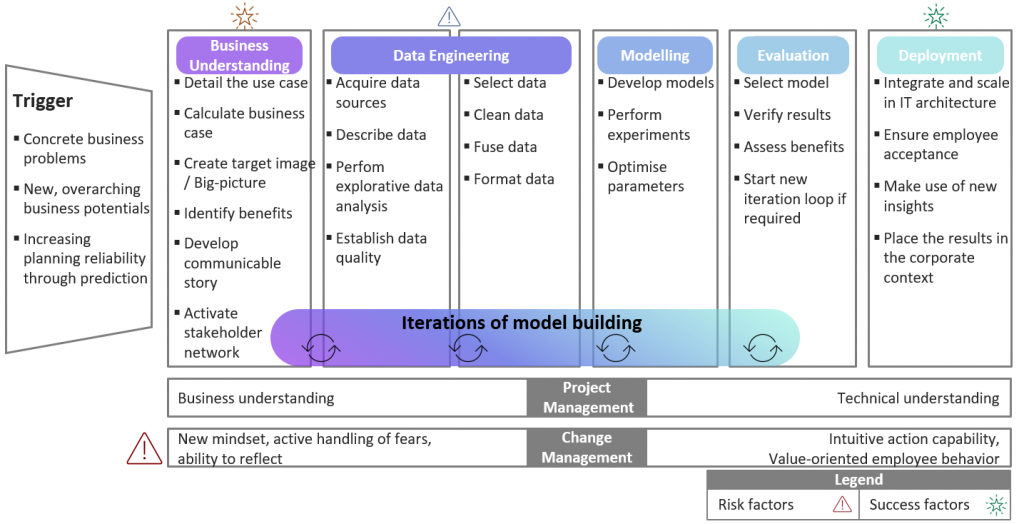
Figure 3: Procedure model
The model highlights the following IDS aspects, among others:
- The different data science approaches, namely descriptive, diagnostic, predictive, and prescriptive analytics
- Alternative approaches such as KDM (Knowledge Discovery in Databases) and SEMMA (Sample, Explore, Modify, Model, and Assess)
- A prioritisation process for AI projects
- Terms such as Key Performance Indicators, Measures, Metrics
- The technical and organisational roles in IDS projects
- The data science tool landscape (last update in May 2021)
- Terms such as data types, scale levels, data pipelines, and data reporting
- The Machine Learning and Deep Learning disciplines, as well as learning types, problems, and modelling methods
- Evaluation goals and deployment strategies
- A comprehensive IDS glossary
The model is also available as a lesson module under: Work und Learn Plattform (Link will follow soon)
Summary and outlook on further research goals
While mosaiic’s research work to date has focused on the collection of information and the theoretical definition of a process model, the next phase of the AKKORD project will involve the further development of the results obtained to date and testing them with research partners. Furthermore, the previous results will be cross-linked to the activities of other research partners.
By the end of the research project, mosaiic aims to achieve the following research goals:
- Testing of the process model defined by mosaiic with a research partner
- Development of a pragmatic role model Data Science projects for SMEs together with research partners
- Best practice benefit story (provided that funding is available)
- Linking of the maturity model from the conducted interview study with relevant initiatives of the partners
- Further research on successfully anchoring the project results from proof-of-concept phases into company structures.
Author and Contact Person:

